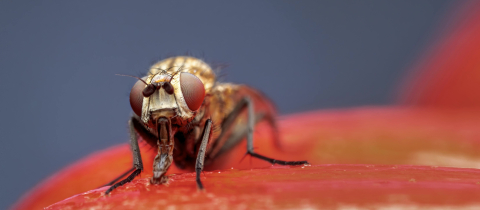Undergoing a root canal procedure is not one of the great pleasures of life, but it is a highly effective technique for saving teeth. The idea is to remove the diseased pulp of a tooth and then fill the root canals with gutta-percha, a rubber-like material from the sap of sapodilla trees that grow in East Asia. The gutta-percha has to be heated to reduce its viscosity so that it can easily flow into the vacated canals. The heat causes some degradation of the gutta-percha with the release of isoprene, a compound that has a characteristic fragrance.
Gutta-percha is very similar to rubber which is also derived from the exudate of a tree (Hevea brasiliensis), but it is harder and more resistant to water. The difference in properties between gutta-percha and rubber comes down to a question of molecular structure. Both substances are composed of giant molecules, in other words, polymers, built of repeating “isoprene” segments. But the isoprene “monomers” are joined together in a slightly different way and that causes the difference in properties. (for the chemically astute: the double bonds have the “cis” configuration in rubber and “trans” in gutta-percha).
Long before root canals, gutta-percha had an interesting use. Golf balls! Golf ball collectors, and yes, there is such a species, love to get their hands on any balls made roughly between 1850 and 1900. That’s when gutta-percha balls replaced leather balls stuffed with feathers. The earliest “gutties” were hand made from pieces of gutta-percha that were softened by heating in water. Eventually, a skilled gutty maker was able to produce six dozen or more balls a day, 25 times what a feather ball maker could turn out. This meant that the price of golf balls dropped and consequently allowing golfers of all means to play the game.
Today, if you're lucky, gutta-percha golf balls can be found for a few hundred dollars, but the hand-hammered balls produced between 1855 and 1875 have been auctioned for as much as $28,000. For that amount of money, you can even get a root canal. And when you get one, you’ll note the isoprene smell, which is released once the gutta-percha is heated. It may even be a familiar smell since human sweat also contains isoprene from the breakdown of vitamin A! And since you likely do some sweating as you grip the arms of the dental chair while the dentist is digging into your roots, you may well be contributing some isoprene to the scent that wafts into your nose.







